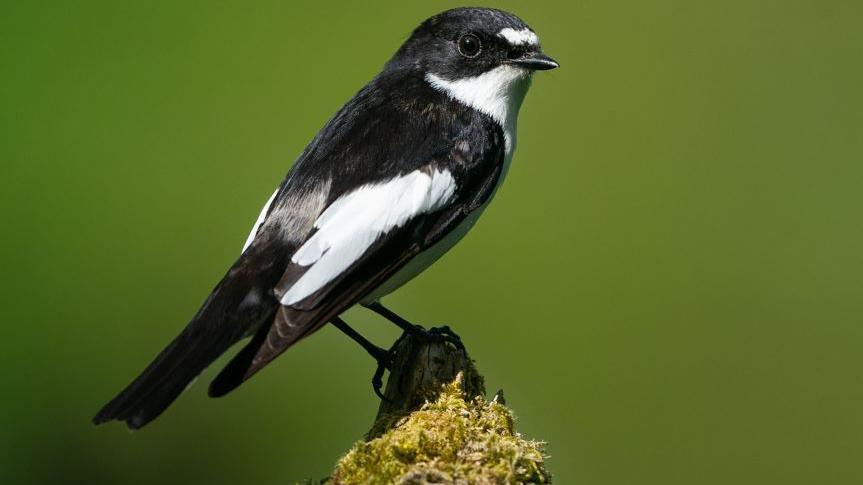Best pied flycatcher breeding season in a decade

The RSPB said it was a "joy" to see so many pied flycatchers at Haweswater
At a glance
2023 hailed as best pied flycatcher breeding season at Haweswater
There were between 50 and 60 breeding pairs in the reserve
The RSPB said it was a "joy" to see so many migrate from West Africa
- Published
The number of rare, breeding pied flycatchers at a Lake District nature reserve has risen by 38% in a decade, the RSPB said.
In 2013, 21 male birds were recorded at Haweswater, but this year the number has risen to 29.
The charity estimated that there were between 50 and 60 breeding pairs in the summer and said it was a "joy" to see them back from West Africa.
Clearing reserves of holly that blocks out light had helped the small birds to flourish, the RSPB said.
A spokesman said it also allowed plants and insects, a food source, to flourish.
Breeding was also successful at the RSPB Coombes Valley and Consall Woods reserve in Staffordshire.
In 2021, 39 nesting boxes were occupied by the birds and this increased to 66 in 2023.
Female pied flycatchers are brown and white, distinct from the black and white males
RSPB warden Spike Webb said: вҖңIвҖҷve been monitoring pied flycatchers in the ancient woodlands of Haweswater for many years.
"Their population here has always been pretty steady which has been really encouraging.
вҖңHowever, this summer we had the best number in 10 years.
"Given that these birds come all the way from West Africa in spring to breed here in the Lake District, itвҖҷs always a joy to see them back."
He said this yearвҖҷs success was boosted by habitat management and the dedication of volunteers and RSPB staff.
Follow ҙуПуҙ«ГҪ Cumbria on , and . Send your story ideas to northeastandcumbria@bbc.co.uk.
More stories from ҙуПуҙ«ГҪ North East and Cumbria
- Published19 October 2023